ROZWIĄZANIA POMIAROWE DLA OGRODNICTWA
Spektralne mierniki PAR i gotowe systemy, które mierzą i raportują PPFD, PPF, PBAR + więcej
Strona główna / Rolnictwo i ogrodnictwo
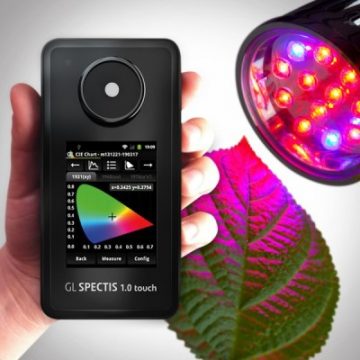
Optymalizacja operacji
Światło widzialne dla ludzkiego oka w zakresie spektralnym od 380 do 780 nm jest również aktywnie wykorzystywane przez rośliny. Ta część promieniowania elektromagnetycznego, która zasila fotosyntezę, zwana PAR (Photosynthetic Active Radiation), zwykle występuje w długościach fal od 400 do 700 nm. Niemiecka norma przemysłowa DIN 5031-10:2000 opisuje krzywą, która jest wzorem matematycznym określającym średnią "wrażliwość" roślin na określone długości fal. Wzór ten jest wykorzystywany w naszym oprogramowaniu sprzętowym i oprogramowaniu, które automatycznie generuje wartości PAR przy użyciu wartości radiometrycznych z naszych systemów spektroradiometrycznych jako podstawy do naszych obliczeń.
Ważne jest, aby zrozumieć, że "jasność" światła widzialnego nie wspiera skutecznie procesu fotosyntezy, ponieważ krzywa PAR znacznie różni się od krzywej V-lambda, której używamy do fotometrii (tj. obliczeń związanych z ludzkim wzrokiem). Aby zoptymalizować system oświetlenia do zastosowań ogrodniczych, należy zapewnić wystarczającą ilość promieniowania o określonej długości fali we właściwym czasie, aby zmaksymalizować plony. Używanie luksów, CCT lub innych wskaźników związanych z widzeniem do weryfikacji lub kwantyfikacji oświetlenia dla roślin jest błędną interpretacją.
Na rynku dostępnych jest wiele różnych mierników PAR i innych radiometrów, ale większość z nich została zaprojektowana i wstępnie skonfigurowana dla ciągłego widma światła dziennego. W przypadku oświetlenia LED w ogrodnictwie, tylko odpowiednio skalibrowane i wysokiej jakości przyrządy mogą zapewnić niezawodne dane dla profesjonalnych użytkowników.
Jeden system, wszystkie wskaźniki
Kompleksowe systemy pomiaru oświetlenia w ogrodnictwie, które obsługują pomiary PAR, PPFD, PPF i PBAR, a także wielkości spektralne i kolorymetryczne. W zależności od potrzeb, do naszego skalibrowanego spektroradiometru można podłączyć różne sondy i kule całkujące do profesjonalnego pomiaru światła w ogrodnictwie.
Pomiar. Ulepsz. Rosnąć
Dostarczamy więcej niż tylko wysokowydajne mierniki PAR. Rozszerz swoje możliwości dzięki naszej gamie akcesoriów lub interfejsowi oprogramowania Spectrosoft Analysis, który pomaga ocenić wszystkie dane radiometryczne i promieniowania aktywnego wymagane do dokładnego pomiaru światła w ogrodnictwie.
Szybsze i lepsze wyniki
Wstępnie skonfigurowane systemy pomiaru światła w ogrodnictwie pomagają użytkownikowi szybciej mierzyć oświetlenie LED. Starannie skalibrowane urządzenia zapewniają uzyskanie wiarygodnych danych i podejmowanie właściwych decyzji dotyczących optymalizacji oświetlenia dla wzrostu roślin.
Dla kogo przeznaczone są spektralne mierniki PAR?
- Producenci oświetlenia do uprawy
- Naukowcy i laboratoria badawcze
- Rolnictwo Użytkownicy oświetlenia dla ryb i zwierząt
- Rolnicy pionowi / rolnicy pracujący w pomieszczeniach
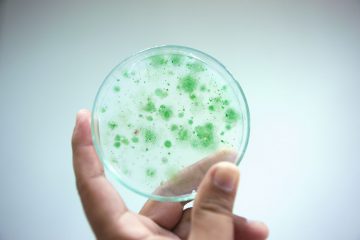
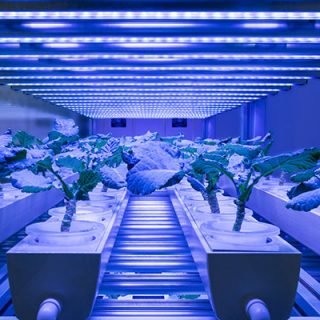

Co można mierzyć?
Aktywne promieniowanie fotosyntetyczne (PAR) i gęstość strumienia fotonów fotosyntetycznych (PPFD)
Dla hodowców roślin, biologów i naukowców najważniejszymi danymi dotyczącymi zapotrzebowania roślin na światło jest pomiar PPFD (gęstość strumienia fotonów fotosyntetycznych). PPFD jest miarą ilości światła, które faktycznie dociera do rośliny. Można go opisać jako liczbę fotonów aktywnych fotosyntetycznie, które padają na daną powierzchnię w każdej sekundzie. Pomiar światła stymulującego wzrost roślin obejmuje widma PAR i jest wyrażany w wartościach PPFD w μmol/m2/s i PPF w μmol/s. Podobnie jak w przypadku wskaźników ludzkiego wzroku, gdzie oceniamy luksy i CRI, które są ilością światła i jakością światła dla widoczności, w przypadku roślin używamy PAR i PPFD do oceny ilości i jakości aktywnego promieniowania.
Biologicznie aktywne promieniowanie roślin (PBAR)
PBAR to nowy miernik, który staje się coraz bardziej popularny, ponieważ obejmuje rozszerzone długości fal od 350 do 800 nanometrów w widmie, czyli PBAR Flux. Ta metryka uznaje, że fotopigmenty inne niż chlorofil, które są wrażliwe na szerszy zakres długości fal, zostały odkryte w roślinach. Z tego powodu sugerowany jest system pomiarowy o rozszerzonym zakresie spektralnym.
Fotosyntetyczny strumień fotonów PPF (PPF)
Dla producentów rosnących świateł pomiar PPF jest również ważnym wskaźnikiem. Ocenia on całkowitą ilość energii wytwarzanej przez źródło światła na sekundę. Jest on podobny do pomiaru mocy promieniowania i można go wykonać za pomocą kuli całkującej podłączonej do spektroradiometru, gdy system jest odpowiednio skalibrowany, a obliczenia fotosyntetycznego strumienia fotonów są obsługiwane przez oprogramowanie. GL Optic oferuje pełną gamę różnych rozmiarów kul całkujących od 48 mm 500 mm, 1 m do 2 m, które są gotowe do pomiaru PPF.
Do zastosowań laboratoryjnych zalecamy miernik Spectis 5.0 Touch PAR/PPFD, który oferuje detektor o wyższej rozdzielczości i rozszerzony zakres widmowy. Wszystkie nasze spektrometry mogą również współpracować z wodoodpornym akcesorium GL Opti Probe 1.1.10 illuminance, które może pracować pod wodą i mierzyć strefę eufotyczną. Odpowiednim sprzętem do pomiarów PPF jest GL Opti Sphere - dostępna w średnicach od 48 mm do 2 m. Aby móc analizować, porównywać i raportować wszystkie dane, zaleca się korzystanie z GL Spectrosoft - oprogramowania laboratoryjnego kompatybilnego ze spektrometrem GL Optic.
Zbuduj swój własny zestaw
Poniższe produkty można skonfigurować pod kątem konkretnych zastosowań przemysłowych...
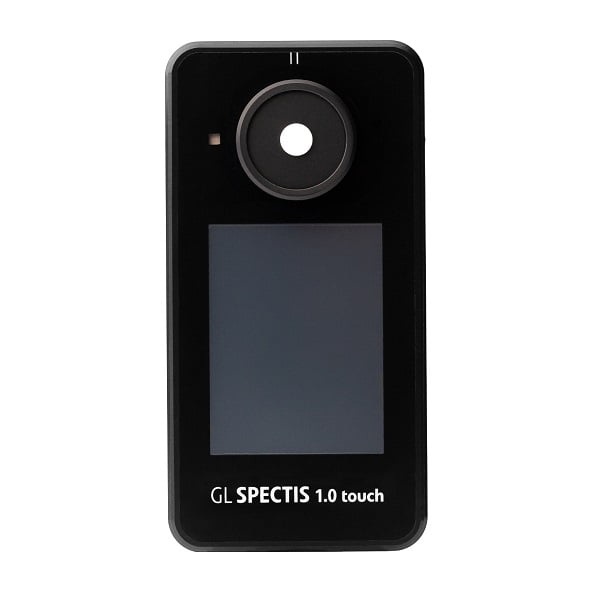
GL SPECTIS 1.0 Touch
GL SPECTIS 1.0 Touch jest niezbędnym narzędziem w rolnictwie, leśnictwie i oceanografii:
- zakładanie, kontrolowanie i zwiększanie wydajności pól uprawnych
- ocena środowisk wzrostu dla całej flory
- dowiedzieć się więcej o procesach fotosyntezy roślin i bakterii
- badanie zachowania pigmentów w roślinach
- projekcja, produkcja i kontrola rosnących świateł
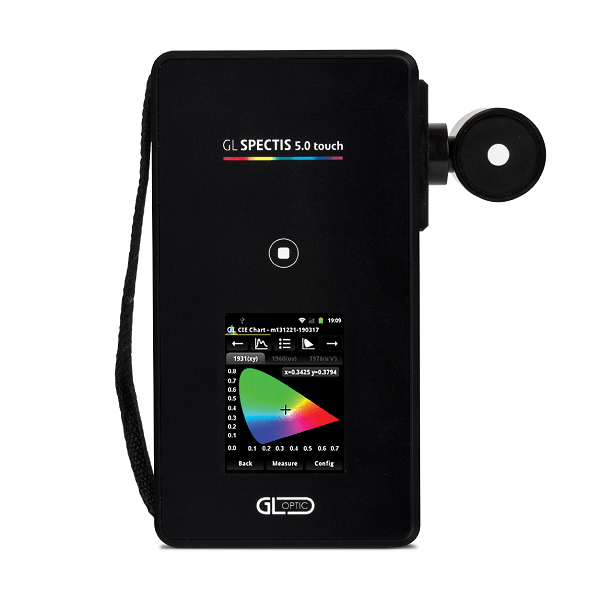
GL SPECTIS 5.0 Touch
GL SPECTIS 5.0 Touch oferuje naukowcom rozszerzone możliwości:
- testy laboratoryjne
- projekcja, produkcja i kontrola rosnących świateł (bardziej zaawansowana wersja z szerokim zakresem długości fali 200-1050 nm)
- zakładanie, kontrolowanie i zwiększanie wydajności gruntów rolnych
- ocena środowisk wzrostu dla całej flory
- dowiedzieć się więcej o procesach fotosyntezy roślin i bakterii
- badanie zachowania pigmentów w roślinach
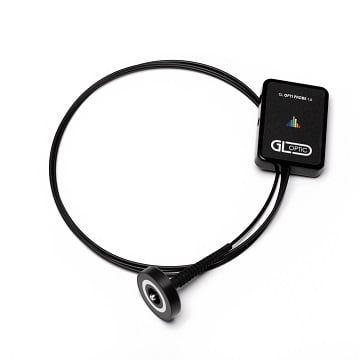
Cała gama DODATKOWYCH PROBLEMÓW
Wybierz GL OPTI PROBE jako akcesorium, które:
- może ocenić wysoką intensywność pod wodą
- pomiar źródeł światła w PAR (działa od 400 nm)
- jest wodoodporny i może pracować pod wodą do 1,5 nm (jest to długość kabla światłowodowego)

GL OPTI SPHERES
Wybierz jedną z wielu dostępnych opcji kuli integrującej:
- ocena i raportowanie danych PPF
- przechwytywanie całkowitej energii i PBAR dla specyfikacji produktu
- Pomiar różnych rozmiarów lamp z kulami dostępnymi w średnicach 48 mm, 205 mm, 500 mm i 2000 mm.
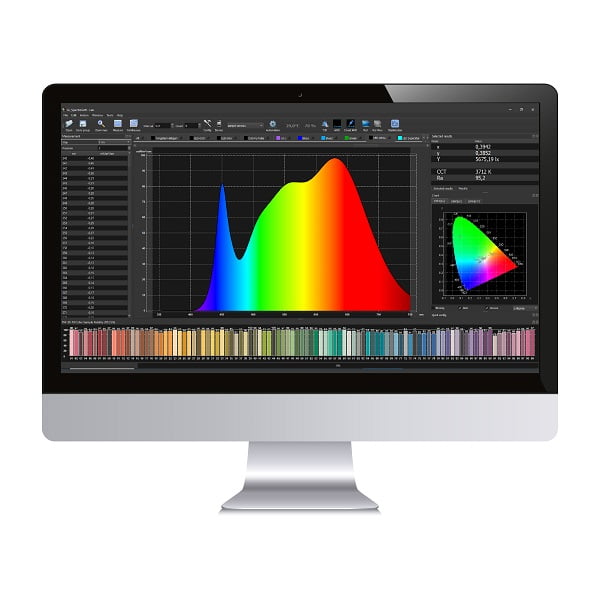
GL SPECTROSOFT M
Oprogramowanie GL SPECTROSOFT zawarte w pakiecie jest intuicyjne, przyjazne dla użytkownika, dostarcza wyniki w ciągu kilku sekund i posiada łatwe funkcje eksportu i importu. Jest to idealne narzędzie dla środowiska produkcyjnego i pracy w terenie, a także laboratoriów i może być używane do różnych zastosowań:
- porównywanie danych zebranych w dowolnym momencie
- analizować wyniki na łatwych do interpretacji wykresach i tabelach
- tworzenie i dostosowywanie raportów w edytowalnych plikach, w tym Excel, PDF itp.